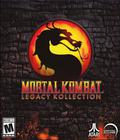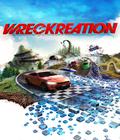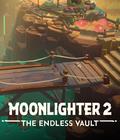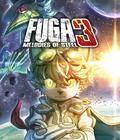Fuga: Melodies of Steel 3 opens up almost directly where Fuga 2 ended. The plot of the first two games followed a group of children, who stumbled upon a super-powerful combat tank called the Taranis. They use Taranis to fight their way through the forces of the evil empire, several dark gods, and the reincarnated remnants of destroyed societies. They left behind the Taranis and returned home, but then everything went south. Ash, the long-lost brother of protagonist Malt, showed up with the Taranis and kidnapped Malt. The remaining kids must get back in the tank, rescue Malt, and stop the empire from launching a new war.
Fuga 3's plot hits the ground running. It opens up with a secret evil brother, and pretty much every new chapter contains several major plot twists, revelations, and character moments. Every character gets their own plot moments, many of the major mysteries of the setting are answered, and it's genuinely difficult to discuss more than the basic concept without spoiling the plot. Assuming you don't mind how absolutely over the top it is, Fuga 3 represents a very strong ending to the major plot arcs introduced in the first two games. It leaves plenty of possibilities for future sequels, including a few plot choices that will likely be controversial with fans.
Sometimes, Fuga 3 feels like it does too much. While Fuga 2 felt like it was spinning its wheels for most of its runtime, Fuga 3 goes almost too far in the opposite direction. It manages to fit three games' worth of plot, characters and events into a single storyline. That helps keep things engaging, but it also adds the feeling of being rushed. It is noticeable near the end, where the penultimate chapter contains several major plot climaxes and the last chapter brings an entirely different plot point to an entirely different resolution ... and then you unlock even more story after that.
Fuga 3 follows the same basic combat and design flow as the previous two games. You control the giant tank Taranis and move forward along a linear pathway, occasionally having the choice to move between different routes that offer different challenges and rewards. Once you reach a node in the path, you'll get items, rewards, be able to temporarily stop and chat with your party members, or get into fights. This continues until a stage is complete, at which point you get a brief intermission.
The turn-based combat system in Fuga 3 continues directly from the previous two games. The Taranis is a single tank, but it has three gunner slots, each of which is controlled by two characters. Depending on who is controlling the turrets, they are either a machine gun, grenade launcher or cannon. The weapon has a different passive boost that is dependent on the second character. You and the enemies take turns attacking, with each individual slot functioning as its own character. Your overall goal is to target enemy weaknesses (tied to one of the three weapon types) to stun them, so you can defeat them before they can overwhelm your party. You can swap characters at any time, but there's a three-turn cooldown before you can swap again, so careful planning is an important part of the strategy.
The biggest change to the combat is the addition of the combo system, which brings the combat to a whole new level. It's pretty simple: Attack enemy weak points to gradually build up a combo meter. Each time you stack the combo meter, you gain bonus damage, which maxes out at 200%. If you take an action that doesn't build a combo you lose the meter and the bonus. Certain skills and abilities can manipulate this further, like Hack and Chick having special skills that do more damage the higher your chain combo.
The combo system builds naturally on the way you already play the game, but it adds thought and variety to how you approach fights. Is it worth leaving an enemy alive instead of finishing them off, so you can build up your combo and don't break your streak? Is it worth defending against a big incoming attack and losing the bonus? Should you swap in Malt to do massive damage and lose the combo? It's a ton of fun, and it means once you master the system, you're constantly swapping around equipped characters to optimize the dealt damage.
Likewise, the game has some nice tricks to make weakness combos more interesting. Enemies can now manipulate their combos, such as blinding your characters so they can't see what the weaknesses are, changing their weaknesses mid-combat, or having "locked" weaknesses that can only be properly targeted once the other weaknesses are dissolved. You can even get an upgrade that grants a bonus wild card" weakness once the other weaknesses are broken, so it's easier to chain combos.
Another nice change to the combat is how special moves work. In the previous games, each character built up a burst attack that could be unleashed for massive damage at any time. Unfortunately, this leads to the blunt tactic of saving all your super moves for a boss and unleashing them all at once. In Fuga 3, the entire party shares one burst meter, and it's a huge improvement. Hitting an enemy weakness fills it up, and once it is full, you perform a special attack based on the combo of children who dealt the final blow. It can't be saved or stored up, which means you need to consider if you want to risk breaking your combo so you can use a burst with a different child combo.
The ability to store up and save moves has moved to the new Assist system. As you progress in the game, you'll be asked to make dialogue choices based on tactics or bravery. Depending on your answers, you'll unlock Assist characters, who are characters from the storyline who aren't part of the tank crew. In battle, you can build up an Assist meter and spend the meter to summon an Assist character to help you. The Assist characters perform a powerful attack that doesn't waste a turn and has a passive bonus, such as giving your party a buff, reducing enemy armor, or inflicting a bad status effect. Once used, most Assist characters have a cooldown before they can be used again. I like this system a lot more. It isn't as overwhelmingly powerful, but it still gives the ability to get an emergency Assist when needed. It also adds meaning to the choices one makes during the game.
If there's a new system I didn't like, it's the Leadership skills. Returning from Fuga 2, these are special skills that randomly activate during battle based on certain conditions. In Fuga 2, they were tied to dialogue choices, but in Fuga 3, they are active from the start. Every child has their own Leadership skill that triggers randomly, ranging from Britz being able to replenish enemy weakness marks to Sheena giving you a once-a-fight SP replenishment.
My main issue is that the bonuses are kind of random. Some have reliable triggers, such as Sheena's aforementioned skill requiring you to go below one-fourth of your SP, but many of the skills just kind of happen. You can't plan or work around them, so it feels like a "win more" situation. It's a minor flaw at worst, but I wish they were more naturally integrated into the combat and could've been something to plan around.
The Soul Cannon system returns from the previous games, but it's more passive. The Soul Cannon is a powerful weapon that can win any fight in the game in a single shot, but it sacrifices the life of a child to do so. If you get below one-half of the hit points, the Soul Cannon system activates and drags a child into it. The more turns you fight below half hit points, the further this advances until the game forces the fight to end with a lost child. This holds more weight because the game instantly saves once it occurs. You eventually get the option to redo fights, so you don't have to replay the whole game. It's still a neat way to give you a way to "lose" a fight without actually losing. Fuga 3 drops the non-lethal Managarm option, which isn't a huge loss because it didn't add much to Fuga 2. If anything, it detracted from the dangerous impact of the Soul Cannon.
New to Fuga 3 is the Mega Soul Cannon, but this isn't a mechanic so much as a non-standard game over. In certain boss fights, if the Soul Cannon activates before the boss is below half health or if you lose the fight, the Mega Soul Cannon will trigger. This sacrifices the life of every child to destroy the foe. It's neat from a story perspective, and it adds some drama if you lose a fight, but it's doesn't contribute to the gameplay.
Once you've mastered all the systems, it can become very easy to curbstomp everything, and that detracts from the tension of the Soul Cannon and Mega Soul Cannon mechanics. I never even saw the Mega Soul Cannon outside of an early cut scene. This works fine for the Soul Cannon mechanic because playing well should be rewarded without the risk of it showing up, but the Mega Soul Cannon is forgettable.
Outside of combat, Fuga 3 maintains the same mechanics as the last two games. During rest periods, you're given a certain amount of AP you can spend to have characters chat and build friendships, power up your tank, cook meals to boost stats, or explore ruins to find rare materials. There's a new Paws and Pickaxes minigame where you assign children and assist characters in mining between rest points; the minigame earns a special currency to power up your tank.
The similarity to the previous two games isn't a bad thing. The core gameplay flow is a lot of fun, and Fuga 3 is careful to not rock the boat too much. Most of the big changes are to the combat, and that works fine. There's enough variety and moment-to-moment choices required that it never gets boring, and Fuga 3 has the best overall balance of all three games in the series.
All three games in the Fuga series look almost identical. The nice 2D models still look gorgeous, and there's a lot of excellent CG artwork, but it's not the most visually complex game. Fuga 3 makes the best use of hand-drawn artwork to assure that the various cut scenes have more impact than before, but otherwise, it's pretty similar. The soundtrack is excellent with a lot of memorable and likable soundtracks, and the voice acting (available in Japanese and French) is quite good. It's nothing groundbreaking, but it works well.
Overall, Fuga: Melodies of Steel 3 is the strongest game in the franchise to date. While the plot is more over-the-top than the first game, it creates a far more compelling and interesting narrative to the sequel, while also expanding and building upon the many gameplay improvements. The combat system has never been better, and the mechanics have been polished to a sheen. It has flaws, and not all the plot points are going to work, but it's proof that CyberConnect knows how to keep players invested in the franchise.
Score: 9.0/10
More articles about Fuga: Melodies Of Steel 3











 As the RPG series reaches its epic conclusion, Fuga: Melodies Of Steel 3 offers a new strategy-based battle system, enhanced Taranis training during intermission, and tactical route progression and event battles!
As the RPG series reaches its epic conclusion, Fuga: Melodies Of Steel 3 offers a new strategy-based battle system, enhanced Taranis training during intermission, and tactical route progression and event battles!

































